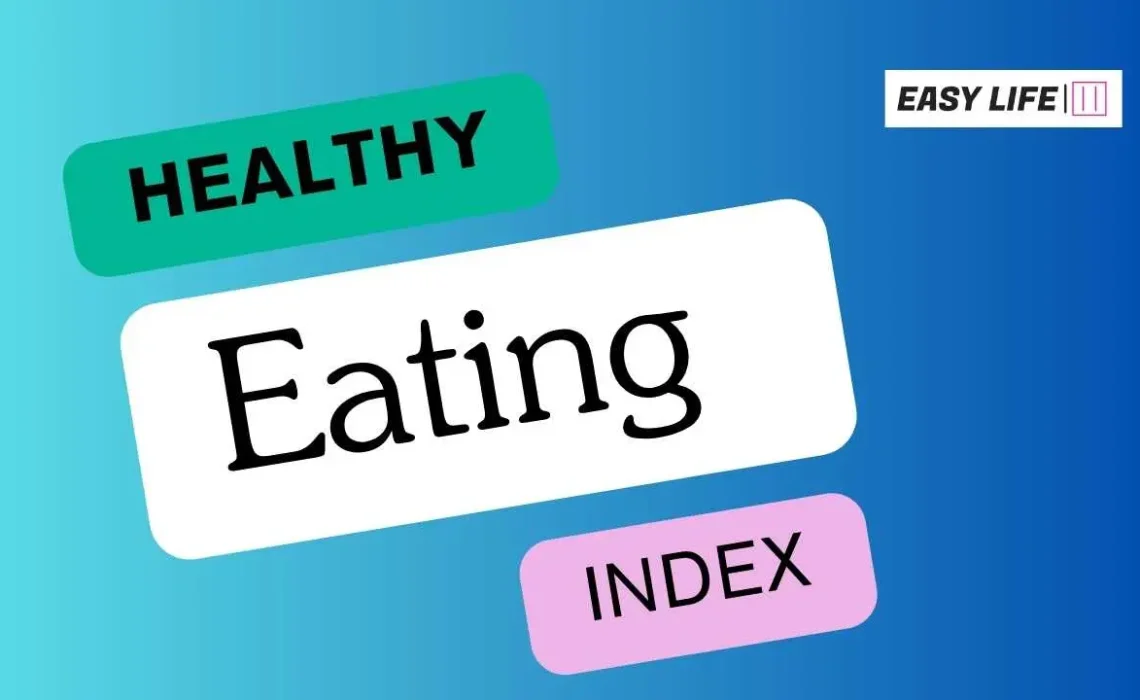The average American diet, when measured by the Healthy Eating Index (HEI), has shown gradual improvement in recent years, but still falls short of optimal recommendations. While this indicates progress, it also highlights the ongoing struggle to achieve widespread healthy eating habits in the United States.
Table of Contents
ToggleThe overall diet quality among Americans based on the healthy eating index score has done what?
Here’s a closer look at the data:
- The latest HEI score for Americans ages 2 and older is 58 out of 100, based on the HEI-2020 version of the index. This represents a slight increase compared to previous years, but it remains significantly below the ideal score of 100.
- While the overall score shows improvement, areas of concern persist. Americans typically consume insufficient fruits, vegetables, whole grains, and dairy, while exceeding recommended levels of added sugars, saturated fats, and sodium.
- Certain groups face particular challenges. Children under 4 and adults over 60 tend to have higher HEI scores, but disparities exist based on income, education, and race/ethnicity.
What’s driving this slow progress?
- Increased awareness: Public health campaigns and educational initiatives are raising awareness about healthy eating, potentially leading to small shifts in dietary choices.
- Policy changes: Some government policies, like school meal programs and SNAP incentives for fruits and vegetables, may contribute to improved dietary patterns for certain groups.
- Shifting food landscape: The availability of healthier options in grocery stores and restaurants might nudge individuals towards more balanced choices.
However, challenges remain:
- Cost and access: Healthy foods can be more expensive and less accessible in some communities, limiting their adoption.
- Convenience: Processed and fast foods are often more convenient and affordable, hindering healthy choices for busy individuals.
- Cultural factors: Food preferences and traditions can influence dietary habits, making change challenging for certain groups.
Looking ahead:
- Continued public health efforts are crucial to raise awareness, improve food environments, and address affordability concerns.
- Targeted interventions for specific populations and communities can bridge existing gaps.
- Innovation in the food industry can make healthy options more appealing, affordable, and readily available.
How is the Healthy Eating Index measured?
The Healthy Eating Index (HEI) measures diet quality by comparing someone’s intake with the recommendations in the Dietary Guidelines for Americans (DGA). It doesn’t tell you how much or how little to eat, but rather evaluates the types and proportions of foods consumed. Here’s how it works:
Components:
The HEI is based on 10 components:
- Five food groups: Fruits, vegetables, whole grains, protein foods, and dairy.
- Four nutrients: Total saturated fat, ratio of polyunsaturated to saturated fat, added sugars, and sodium.
- One overall measure: Variety in dietary choices.
Scoring:
Each component receives a score of 0 to 10, with 10 being the best adherence to DGA recommendations. The individual component scores are then weighted and summed to produce an overall HEI score ranging from 0 to 100. Higher scores indicate a diet closer to the DGA guidelines.
Data collection:
The HEI doesn’t directly measure individual intake. Instead, it uses data from national surveys like NHANES (National Health and Nutrition Examination Survey), where participants track their food intake for several days. This data is analyzed to estimate average intakes for different population groups.
Versions:
The HEI has been updated several times to reflect changes in DGA recommendations. Currently, the most widely used version is the HEI-2020.
Limitations:
It’s important to remember that the HEI is a population-level measure and individual scores may vary. It also doesn’t account for individual health needs or specific dietary restrictions.
Who created Healthy Eating Index?
The Healthy Eating Index, or HEI, wasn’t developed by a single person, but rather through a collaborative effort between two major institutions in the United States:
- United States Department of Agriculture (USDA): Specifically, the HEI was created by scientists at the Food and Nutrition Service (FNS) within the USDA’s Center for Nutrition Policy and Promotion (CNPP).
- National Cancer Institute (NCI): This branch of the National Institutes of Health (NIH) also played a key role in the development and revision of the HEI.
The initial version of the HEI was conceived and published in 1995. Since then, it has been revised and updated multiple times, with the most recent iteration being the HEI-2020. Both the USDA and NCI continue to collaborate on ongoing updates and analyses of the index.
It’s important to acknowledge the collective effort behind the HEI, emphasizing the contributions of various experts and researchers within these institutions who have shaped this valuable tool for assessing national diet quality.
Conclusion:Healthy Eating Index
In conclusion, while the HEI score indicates slow improvement in the overall diet quality of Americans, significant work remains to achieve widespread adherence to healthy eating guidelines. Addressing systemic barriers, promoting healthy choices, and fostering a culture of healthy eating are key steps towards a healthier nation.
Please note: This article provides a general overview based on publicly available data. Specific details and nuances may vary depending on the chosen HEI version, data sources, and population subgroups analyzed.
Government sources:
- USDA Food and Nutrition Service: Healthy Eating Index (HEI)
- USDA Food and Nutrition Service: HEI Scores for Americans: https://www.fns.usda.gov/cnpp/hei-scores-americans
- Dietary Guidelines for Americans: https://www.myplate.gov/
I hope this helps!









